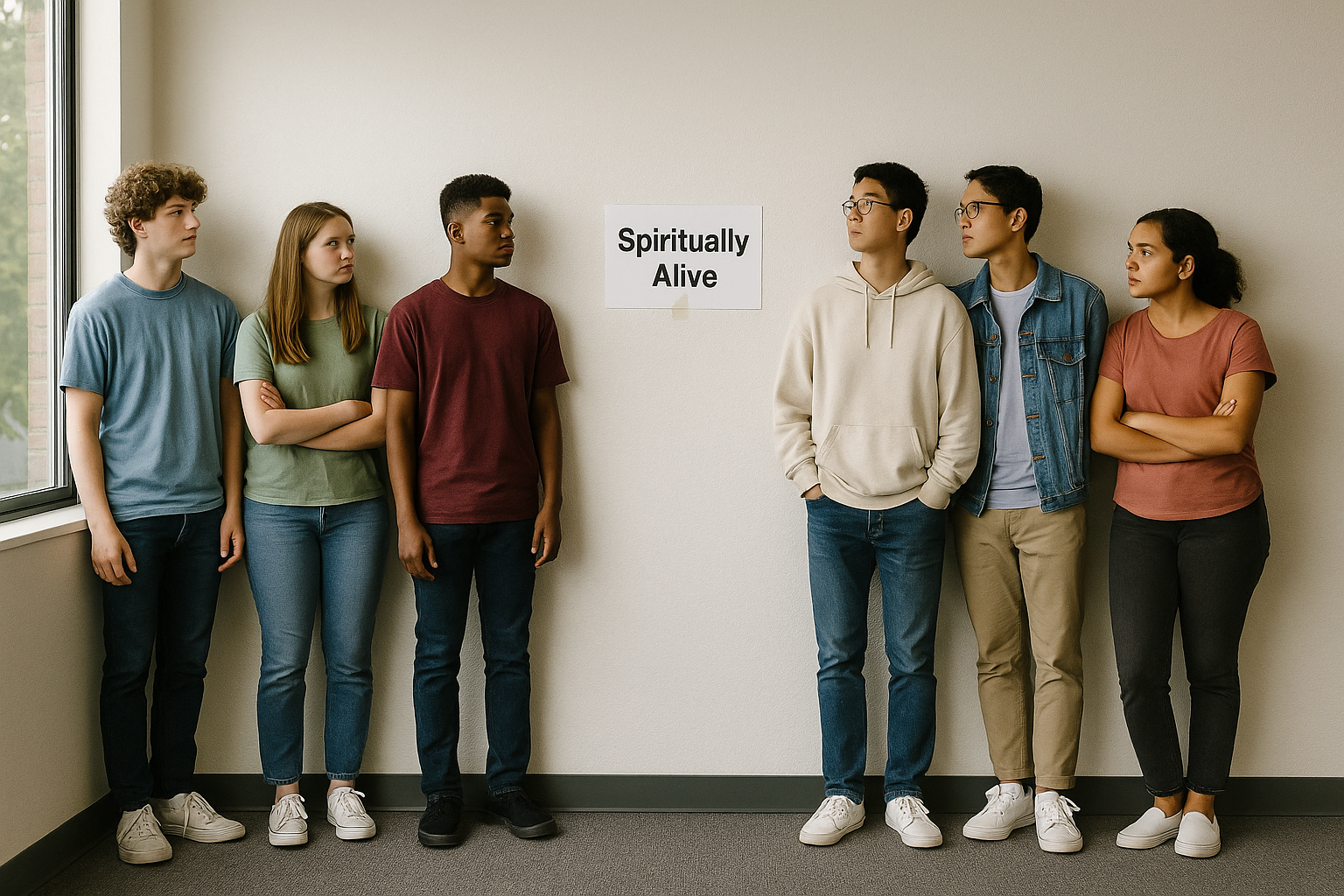
10 Youth Group Games You Can Play with Just a Kickball
Everyone loves games. Games can start connections with your group. As youth pastors, we want to make the time to

Have you ever looked out during a sermon and seen blank stares, crossed arms or the “I’d rather be anywhere else” look? You’re not alone. Many teenagers aren’t turning away from faith because they’re angry at God; they simply feel disconnected, disinterested or stuck going through the motions. Sometimes they show up because their parents make them, and sometimes because it’s a social space, but there isn’t always a spark of real engagement.
As youth pastors, we’ve all felt that gap between what we want for them and what we see in their eyes. You might have a student who used to be passionate about worship suddenly glaze over; another who faithfully serves but confesses privately that they feel nothing. Our challenge is to break through that wall of indifference and help students develop a faith that is active, personal and real. We do this by first understanding what’s happening in their hearts, then showing them what faith looks like beyond Sunday morning. And we always remember that behind every bored stare is a story we may not have heard yet.
Time needed: 1 hour
Materials Needed: A printed or projected list of 20–30 everyday spiritual disciplines (e.g., reading Scripture, praying before meals, serving others), index cards or sticky notes, pens for each student, a large sign that reads: “Jesus Is the Source”, blank pieces of paper for journaling.
Begin by asking students to describe what it feels like when they’re on “spiritual autopilot.” They might say they feel disconnected during worship, zone out during teaching, or pray out of habit but not hunger. Normalize those experiences without excusing them.
Introduce the idea that spiritual apathy is usually more of a quiet drift than a loud rebellion. You could say something like: “Apathy rarely starts with a ‘no’ to God. It usually starts with a ‘not now.’ Over time, that turns into silence.”
Then give them permission to be honest. You’re not trying to guilt them. You’re giving them a vocabulary for naming the thing that makes them feel far from God, even when they’re still going through the motions.
Pro Tip: When students feel safe naming their apathy, they’re one step closer to overcoming it.
Spiritual apathy is rarely the root issue—it’s a symptom. Use this time to ask good questions that dig underneath the surface. You might say:
“What do you feel when you read the Bible lately?”
“Do you ever feel like God’s silence means something about your worth?”
“What are the distractions that most easily pull you away from paying attention to your faith?”
Then let them write on index cards:
One word or phrase that describes how their faith feels right now.
One factor they think contributes to that feeling.
Once everyone writes their cards, have them place them anonymously in a box or tape them to a wall. Read a few aloud and validate the variety. You’ll see a spectrum of answers—boredom, shame, stress, numbness. That’s your starting point for healing.
Pro Tip: Helping students name their drift allows them to take real steps back toward God instead of faking passion they don’t feel.
Now it’s time to shift from introspection to good news. Walk them through Luke 15—the story of the Prodigal Son. But instead of focusing on the younger brother, talk about the Father.
The Father runs toward the one who’s far off.
He prepares a feast without requiring an apology first.
He initiates relationship before behavior is cleaned up.
Then say this clearly: “If you’re apathetic right now, God is still sprinting toward you. You haven’t disqualified yourself. He’s not mad—He misses you.”
Help them see that the gospel isn’t just the starting line of faith—it’s the antidote to burnout. You don’t reignite passion by trying harder. You reignite passion by remembering that you’re already loved.
Pro Tip: Apathy often comes from shame or exhaustion. The gospel answers both: You’re not a disappointment to God, and He already carried the weight you’re trying to perform under.
Create a visual, embodied moment. On one end of the room, tape a sign that says “Spiritually Cold.” On the opposite wall, tape “Spiritually Alive.”
Tell students: “Without talking, walk to where you’d place yourself on this spectrum right now.”
Once they’re standing on the line, give them a few moments of silence. Then ask:
“What’s one small move you could make this week to take a step toward Jesus?”
“What’s one thing you need to let go of that’s draining your spiritual energy?”
Allow students to share or journal in response. You don’t need dramatic declarations—you’re cultivating slow steps of return.
Pro Tip: Movement can help students locate themselves emotionally. When their body does something, their heart tends to follow.
End the night with a Holy Spirit listening exercise. Ask: “What might God be saying to you in this season?”
Hand out blank paper or journals. Lead them through 5–7 minutes of guided silence, encouraging them to:
Write down whatever comes to mind.
Pay attention to recurring words, feelings, or verses.
Don’t edit—just respond. Then, if time allows, invite students to share what they heard, sensed, or felt. Celebrate honesty over clarity. You’re not looking for prophetic words—you’re showing them that apathy can be overcome through simple, consistent listening.
Pro Tip: Remind them: The opposite of apathy isn’t hype. It’s attention.
Want the full four-week series that inspired this lesson?
Get the Neutral series—complete with Message Manuscripts, Video Messages, Discussion Guides, and Graphics.
Related Posts:
How to Structure a Yearlong Teaching Plan for Your Youth Group
Check out Neutral and Rise – Sermon series designed to help students overcome spiritual apathy and reignite their faith.

Everyone loves games. Games can start connections with your group. As youth pastors, we want to make the time to

Most of us don’t get into youth ministry for the overwhelmingly generous paycheck. We love Jesus, we love the next

The Trinity is one of the most foundational doctrines in Christianity—and one of the most confusing. How can God be